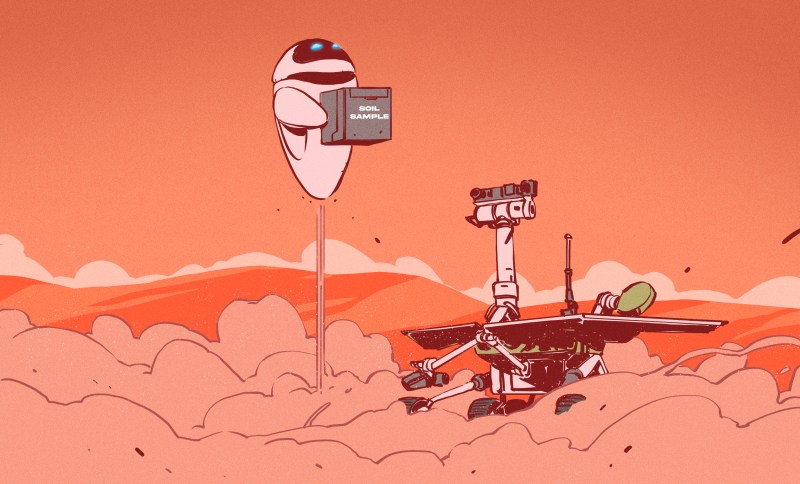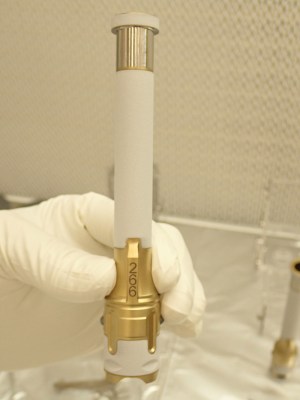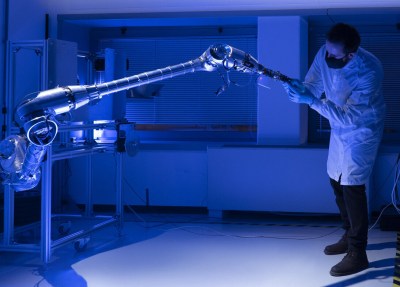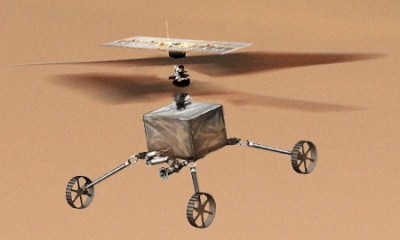
For as long as humans have been sending probes to Mars, there’s been a desire to return rock, soil, and atmosphere samples back to Earth for more detailed analysis. But the physics of such a mission are particularly demanding — a vehicle that could land on the Martian surface, collect samples, and then launch itself back into orbit for the return to Earth would be massive and prohibitively expensive with our current technology.

Instead, NASA and their international partners have been working to distribute the cost and complexity of the mission among several different vehicles. In fact, the first phase of the program is well underway.
The Perseverance rover has been collecting samples and storing them in 15 cm (6 inch) titanium tubes since it landed on the Red Planet in February of 2021. Considerable progress has also been made on the Mars Ascent Vehicle (MAV) which will carry the samples from the surface and into orbit around the planet, where they will eventually be picked up by yet another vehicle which will ultimately return them to Earth.
But there’s still some large gaps in the overall plan. Chief among them is how the samples are to be transferred into the MAV. Previously, the European Space Agency (ESA) was to contribute a small “fetch rover” which would collect the sample tubes dropped by Perseverance and bring them to the MAV launch site.
But in a recent press release, NASA has announced that those plans have changed significantly, thanks at least in part to the incredible success of the agency’s current Mars missions.
Reliable Rovers
Originally, the NASA-built Sample Retrieval Lander (SRL) was to have delivered both the MAV and the ESA’s rover to the surface in one shot. But in 2020 an Independent Review Board expressed concern with the size and mass of such a vehicle, specifically that it would necessitate the development of a new and therefore untested Entry, Descent and Landing (EDL) system. They argued that the MAV and ESA rover should land separately using a variation of the EDL technology developed for the Curiosity and Perseverance rovers.
Instead, NASA and the ESA have agreed to simply delete the rover entirely and have Perseverance deliver the samples to the SRL itself. Based on the longevity of Curiosity, which has now spent a decade on the Martian surface, there’s an excellent chance that Perseverance will still be operational in 2031 when the SRL is expected to arrive.

From an outsider’s perspective, it might seem like this should have been the plan from the start. After all, if the samples are already on a functioning rover, why do you need a second rover to come retrieve them? But keep in mind that when this plan was originally devised, Curiosity and its twin Perseverance had yet to prove themselves. Having the smaller and less complex ESA fetch rover available was seen as a reasonable precaution, so that the samples could be retrieved even if Perseverance itself had failed or became stuck.
But there’s something of a catch. The robotic arm on Perseverance which handles the sample tubes lacks the necessary dexterity to actually load them into the MAV. The best it will be able to do is drop them on the surface close enough to the SRL that its ESA-developed 2.5 meter (8.2 feet) Sample Transfer Arm can pick them up and store them. It won’t be the most glamorous of hand-offs in the history of interplanetary exploration, but there’s something to be said for keeping things simple.
Helicopter Backup
While the new plan utilizes Perseverance as the primary means of sample transportation, the success of the overall mission is too important not to build some redundancy into the plan. So in place of a second rover, NASA has decided to go with a bold approach that would have been considered science fiction just a few years ago: should Perseverance be unable to reach the SRL for whatever reason, a pair of helicopters derived from the design of the wildly successful Ingenuity will attempt to retrieve them.

Little information has been released about how these new helicopters will differ from their predecessor, other than the fact that they will now feature wheels mounted to the end of the landing legs and a miniature robotic arm capable of capturing a single sample tube. The addition of wheels means that the helicopters don’t need to land directly over the tube, they just need to get close enough that they can roll over to them. After the sample tube has been picked up from the surface, the helicopter will fly it back and drop it by the SRL.
While Ingenuity has far exceeded all expectations in terms of its performance and longevity, the proposed modifications to the aircraft and this ambitious new mission present new challenges and risks. Sending a pair of helicopters offers another layer of redundancy, and it’s likely that the second helicopter won’t even be activated until the first one has demonstrated its ability to retrieve a sample, offering mission controllers a valuable “do over” should something go wrong.
Of course, should Perseverance not need any help completing its mission, you can be sure that NASA will have some scientifically valuable task that the pair of choppers can set themselves to. After all, you don’t carry hardware 100 million miles to not use it.
0 Commentaires